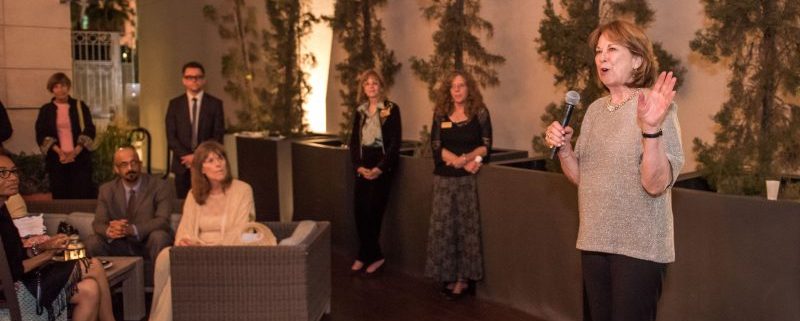Building a Retail Team of Complementary Thinkers
January 23, 2017
By Susan DeLand
The customer’s experience is paramount in museum retail, which means putting together a team of employees that can ensure a positive outcome. There are many aspects to consider when forming a team—and one of them is the individual’s style of thinking.
So, how should strategic thinking play into your museum store’s team?
The strategic thinking mindset is a way of looking at your business for the long term. It’s getting your brain out of the weeds. Moving your business forward is both analytical and creative, and involves systems thinking, focusing on the big picture and identifying leverage.
You must examine the business you have in order to create a strategy for the business you want. You don’t do this in a silo. It is a purposeful, probing exchange of experiences, ideas and challenges. Getting to this requires doing some groundwork to give you tools to assemble the right balance of influence—and the right mix of people to work your store.
Strategic thinking defines the way you think about, assess, view and create the future, and it’s valuable in making decisions. Understanding the way you and your fellow team members think is critical to harnessing this tool.
It’s key to your success that you gather complementary thinkers in the room, not just those who think like you.
Think of focus and orientation as dimensions. There are big-picture people and detail-oriented people. Determining which thinking styles and dimensions harmonize with your own will help you determine who you should bring into your store’s team.
FOCUS
The first step is identifying the focus of your thinking.
When you get up in the morning and think about your day, do you think about solving problems? Making plans? Which actions you need to take? Which people you will see?
Where does your focus naturally land?
- Ideas: Problems to solve, projects, strategies
- Process: Plans to make, efficiencies to resolve
- Action: Implementation
- Relationships: People you need to see/meet
There isn’t a right or wrong place to focus.
Your answer identifies the way your thoughts work organically. When you pick out a book to read or a movie to watch, is it a romance, drama, mystery, study on string theory? Knowing your natural bent as a thinker and strategist is a strength.
ORIENTATION
The second step is to pay attention to whether you are drawn to thinking in the macro or micro—in the big picture or details.
Not sure where you land? Imagine sitting in a room full of people for a meeting that is dragging on. What is annoying you: the feeling of slogging through the weeds, or that there is too much generalization and vague talk?
Are you a big-picture thinker who prefers general concepts or someone who is detail-oriented?
If you are a big-picture person, you may tend to focus your thinking on ideas and relationships. A detail-oriented thinker will default to process that drives action.
Examples:
Big-picture or macro orientation:
- Explorer: Thinks about generating creative ideas
- Planner: Thinks about designing effective systems
- Energizer: Thinks about mobilizing people into action
- Connector: Thinks about building and strengthening relationships
Detail or micro orientation:
- Expert: Thinks about achieving objectivity and insight
- Optimizer: Thinks about improving productivity and efficiency
- Producer: Thinks about achieving completion and momentum
- Coach: Thinks about cultivating people and potential
Knowing your own thinking style illuminates your own behavior—you may have native confidence in some circumstances, while other circumstances are boring or challenging.
When you analyze your own thinking style, you will understand more about the way those around you think. You’ll be able to identify thinkers who excel in areas where you have less confidence. You can reach out to those who approach thought differently than you and build a strategic team.
 Understanding thinking styles, which ultimately become action styles, is a kind of social currency. You can look for big-picture strategists, detail-oriented workers and cheerleaders for your museum retail team. This will make a strong group of planners and propel growth.
Understanding thinking styles, which ultimately become action styles, is a kind of social currency. You can look for big-picture strategists, detail-oriented workers and cheerleaders for your museum retail team. This will make a strong group of planners and propel growth.
Susan DeLand, DeLand Consulting, hones her expertise in business development through designing and building business infrastructures and guiding growth. She has extensive experience in strategic and financial planning, and all aspects of retail, including systems acquisition and implementation, KPI, profit analysis, marketing and strategic growth in business.








Leave a Reply
Want to join the discussion?Feel free to contribute!